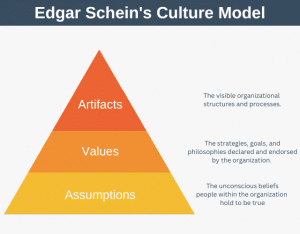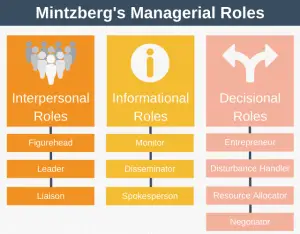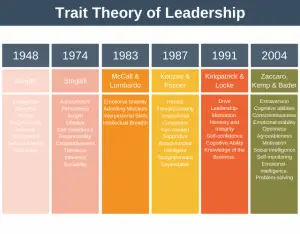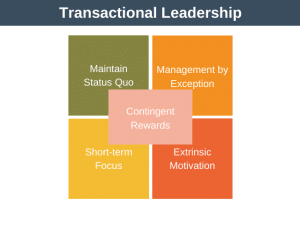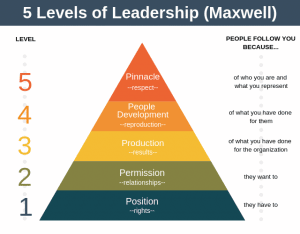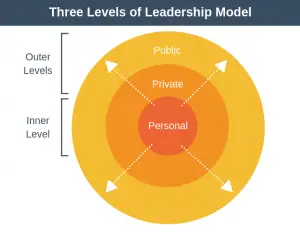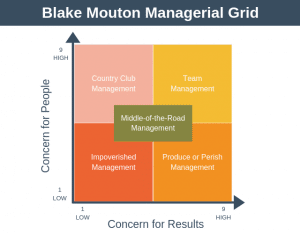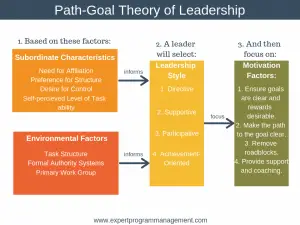The Tannenbaum-Schmidt Leadership Continuum is a model showing the relationship between the level of authority you use as a leader and the freedom this allows your team.
At one end of the continuum are managers who simply tell their employees what to do. At the other end of the continuum are managers who are completely hands off.
As you move from one end of the continuum to the other, the level of freedom you give your team will increase and your use of authority will decrease. Most managers and leaders will lie somewhere in the middle between these two extremes.
The Leadership Continuum was developed by Robert Tannenbaum and Warren Schmidt in their 1958 HBR article, “How to Choose a Leadership Pattern”.
Tannenbaum was an organizational psychologist and Professor at the UCLA Anderson School of Management.
Schmidt was also a psychologist who taught at the UCLA Anderson School of Management.
Two Interesting Facts
Warren Smith is also the name of the fictional character played by Jack Nicholson in the 2002 film, About Schmidt.
The Warren Smith who developed the Leadership Continuum won an Oscar in 1970! An Op-Ed he wrote for the LA Times was turned into a short animated movie which won the Oscar for Best Short Animated Film.
The Leadership Continuum
Most leadership models ringfence a leadership style and analyze it in isolation from other leadership styles. However, in practice, a single leadership style isn’t appropriate for all situations.
Sometimes you might want to borrow elements of another leadership style to use with an individual within your team. Other times you might completely change your style if the situation requires it.
Tannenbaum and Schmidt argued that there are three factors to consider when selecting a leadership style:
- You
- What is your preferred style?
- What are your values?
- Your team:
- What is your relationship with your team?
- Are they ready and enthusiastic to take responsibility?
- The situation:
- How important is the work being undertaken?
- How important or tight are deadlines?
- What is the organizational culture?
The continuum of leadership behaviors is shown in the diagram below.

As can be seen from the diagram, the Tannenbaum-Schmidt Leadership Continuum shows the relationship between the level of authority you use as a leader and the freedom this allows your team.
The far left and far right of the diagram represents two extremes of leadership. Autocratic leaders act like dictators and tell their team what to do. On the other extreme, the leader removes themselves fully from all decision making giving complete freedom to the team.
Within these two extremes, the leadership style a manager uses can fall at any point on the continuum. However, Tannenbaum and Schmidt described seven points on the continuum to make it easy to understand how different leaders behave at different points on the continuum.
1. Tells
The leader that tells is an authoritarian leader. They tell their team what to do and expect them to do it.
This style is useful when you urgently need to turn around a department or business, and also in situations where deadlines are critical.
However, this extreme style can be frustrating for experienced subordinates as it takes no account of team members welfare. Because of this, make sure you only use this style when the situation calls for it.
2. Sells
The leader that sells makes their decision and then explains the logic behind the decision to their team.
The leader isn’t looking for team input, but they are looking to ensure the team understands the rationale behind the decision.
A key aspect of this approach is for the leader to explain how the decision will benefit the team. In this way, the team will see the manager as recognizing their importance.
3. Suggests
The leader that suggests makes their decision, explains the logic behind the decision, and then asks team members if they have any questions.
Through asking questions, the team can more fully understand the rationale behind the decision than the previous approaches. The leader isn’t going to change their decision but they do want the team to fully understand the rationale behind it.
4. Consults
The leader that consults presents their provisional decision to their team and invites comments, suggestions, and opinions.
This is the first point on the continuum where the team’s opinion can influence or even change the decision.
The leader is still in control and the ultimate decision maker, but open to any good ideas the team may have. With this style, the team feels they can influence the decision-making process.
Once the leader has finished consulting with their team, their decision is finalized.
5. Joins
The leader who joins presents the problem to their team and then works with the team in a collaborative manner to make the decision as to how the problem is going to be solved.
This point on the continuum differs from the previous four, as its the first point the leader isn’t presenting their decision. Instead, they are simply presenting the problem to be solved.
This obviously will require plenty of input from the team, making this approach suitable when the team is very experienced or has specialist knowledge.
Because this style involves greater input and influence form the team it can lead to enhanced feelings of motivation and freedom.
6. Delegates
The leader that delegates asks their team to make the decision, within limits that the leader sets.
Although the team makes the decision, it is still the leader that is accountable for the outcome of the decision.
It might seem very risky to let your team make a decision even though you’ll be held accountable for the outcome. However, you can limit the risk by specifying constraints.
You should use this style only with very experienced teams.
7. Abdicates
The leader who abdicates lets the team decide what problems to solve and how to solve them.
Abdication is the total opposite of telling the team what to do using an autocratic style.
Here the team must shape and identify the problem, analyze all the options available, before making a decision as to how to proceed. They will then implement the course of action without necessarily even running it by the leader.
This style can be the most motivating but can be disastrous if it goes wrong. Because of this, you should only use this approach with very experienced and senior people.
This style is often the way the executive boards of companies will run. Under the CEO, each of the division heads will have complete autonomy as to how they choose to execute the company’s strategy.
Advantages and Disadvantages
The advantages of the Tannenbaum-Schmidt Leadership Continuum include:
- As a leader, it gives you a range of ways in which to involve and interact with your team.
- Allows you to understand how your approach should change over time as the situation changes.
- Allows experimentation. You can try giving more responsibility to your team, but if that doesn’t work and the team is not ready, you can take a step back.
- It provides an incremental way to increase or reduce your team’s involvement in decision making.
The disadvantages of the Tannenbaum-Schmidt Leadership Continuum include that it:
- Only examines the process of giving a task to your team, not what happens next.
- Ignores soft factors such as cultural norms and office politics.
- Doesn’t provide a mechanism to determine what is the right approach from the continuum for your team. It leaves that up to you.
Leadership Continuum Summary
The Tannenbaum-Schmidt Leadership Continuum shows the relationship between the level of authority you use and the freedom this allows your team. If you exercise total authority you give your team no freedom. Conversely, if you exercise no authority you give your team total freedom.
Both of these approaches can be useful under certain circumstances, however, most leaders operate somewhere between these two extremes.

